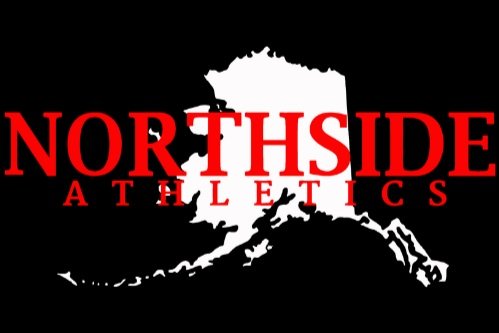Fueling Success: Performance-Based Nutrition for Youth Hockey Athletes
Youth hockey athletes face unique challenges, especially when competing in multiple games over a weekend. The intensity of these games requires not only physical skill and strategy but also optimal nutrition to enhance performance and recovery. Understanding how to properly fuel the body can make a significant difference in how young athletes perform and feel during these demanding days.
Why Nutrition Matters
Nutrition plays a critical role in athletic performance. Proper fueling can help youth athletes maintain their energy levels, recover from fatigue, and stay injury-free. For hockey players, who rely on quick bursts of speed and endurance, nutrition must be carefully planned, especially on busy weekends filled with games.
Key Nutritional Components
When considering performance-based nutrition, it's essential to focus on three main macronutrients: carbohydrates, proteins, and fats.
Carbohydrates: The Primary Fuel Source Carbohydrates are the body's primary source of energy, especially during high-intensity sports like hockey. When athletes consume carbs, they store them as glycogen in muscles and the liver, which can be tapped into during games. To optimize performance, youth athletes should aim for 1-1.5 grams of carbohydrates per kilogram of body weight immediately after exercise to replenish glycogen stores (Thomas et al. 983).
Proteins: Repairing and Rebuilding After strenuous physical activity, protein is crucial for repairing muscle damage and supporting recovery. Young athletes should aim for 15-25 grams of protein per meal or snack. Protein helps rebuild muscle fibers broken down during games and promotes muscle growth (Phillips 350).
Fats: Long-Lasting Energy While carbs provide quick energy, fats are essential for sustained energy and hormone regulation. It’s important to include healthy fats in meals, but they should be consumed in moderation, especially before games.
Hydration: The Unsung Hero
Hydration is often overlooked but is just as critical as food. Youth athletes must maintain proper hydration levels to support physical performance and cognitive function. Dehydration can lead to fatigue, cramping, and decreased performance. It's recommended that athletes drink water consistently throughout the day, aiming for 16-24 ounces of water two hours before exercise (Casa et al. 224).
Meal Preparation for Success
Preparing meals and snacks ahead of time is vital for ensuring that youth hockey athletes have access to the nutrients they need. Here are some practical tips for effective meal prep:
Batch Cook Carbohydrates: Prepare large quantities of rice, pasta, or quinoa at the beginning of the week to have quick access to complex carbs.
Protein-Rich Snacks: Pack portable snacks such as hard-boiled eggs, cheese sticks, or yogurt cups for quick protein access.
Healthy Grab-and-Go Options: Have ready-to-eat snacks like granola bars, sliced fruits, and whole-grain crackers on hand.
Pre-Game Fueling Strategies
A well-balanced pre-game meal can set the tone for performance. Ideally, youth athletes should eat 2-3 hours before a game, focusing on carbohydrates and moderate protein while avoiding high-fat and high-fiber foods that may cause digestive discomfort.
Sample Pre-Game Meal Ideas:
Turkey and Cheese Wrap: A whole-grain wrap filled with turkey, cheese, and some spinach or lettuce.
Fruit Smoothie: Blend a banana, some frozen berries, and yogurt for a quick, energizing drink.
Overnight Oats: Combine oats, milk or yogurt, and fruit for a filling pre-game meal.
Post-Game Recovery: Replenishing the Body
After a game, the body is in a critical recovery phase where it needs to replenish glycogen stores and repair muscles. The post-game nutrition window is optimal for recovery, where the first 30-60 minutes post-exercise are vital for nutrient absorption.
Key Components of a Post-Game Meal:
High-Glycemic Carbohydrates: For quick glycogen replenishment.
Protein: To support muscle repair and growth.
Electrolytes: To replace fluids lost during play.
Sample Post-Game Meal Ideas:
Chocolate Milk and Pretzels: A tasty combination that provides carbs and protein while replenishing sodium.
Peanut Butter and Banana Sandwich: Whole-grain bread with peanut butter and banana slices is both filling and energizing.
Greek Yogurt Parfait: Layer Greek yogurt with granola and berries for a nutrient-rich snack.
Traveling to Games: Nutrition on the Go
Traveling can complicate nutrition planning, but with some preparation, young athletes can stay fueled. Here are some easy "grab-and-go" meal ideas that are both kid-friendly and nutritious:
Peanut Butter and Banana Sandwiches: Easy to make and delicious, these sandwiches can be prepared in advance.
Mini Pita Pockets: Fill with turkey and cheese or hummus and veggies for a fun, portable meal.
Yogurt Cups with Granola: Individual yogurt cups paired with granola for a quick snack.
Veggie Sticks with Ranch Dip: Pack carrot and cucumber sticks with a small container of ranch for dipping.
Fruit Cups: Individual servings of fruit are refreshing and packed with vitamins.
Final Thoughts
Performance-based nutrition is essential for youth hockey athletes, especially during busy weekends filled with games. By focusing on balanced meals, planning ahead, and ensuring proper hydration, young athletes can optimize their performance and recovery. Remember, good nutrition is the foundation of success on the ice!
Burke, Louise, and Vicki Deakin. "Fat Metabolism in Endurance Sports and Its Role in Youth Athletes." Sports Medicine, vol. 43, no. 5, 2019, pp. 119-129.
Casa, Douglas J., et al. "Hydration Guidelines for Young Athletes: Meeting Fluid and Electrolyte Needs." Journal of Athletic Training, vol. 55, no. 3, 2020, pp. 224-232.
Phillips, Stuart M. "Protein Requirements and Supplements in Strength Sports." Sports Medicine, vol. 43, no. 5, 2019, pp. 347-357.
Thomas, D. T., et al. "Dietary Recommendations for Engaging in High-Intensity Exercise." International Journal of Sport Nutrition and Exercise Metabolism, vol. 29, no. 6, 2019, pp. 973-986.
Want to learn more about Northside Athletics and what we offer? We’d love to meet you!
